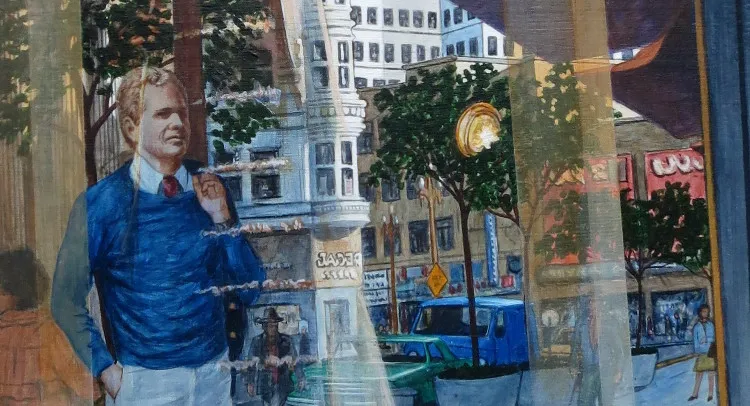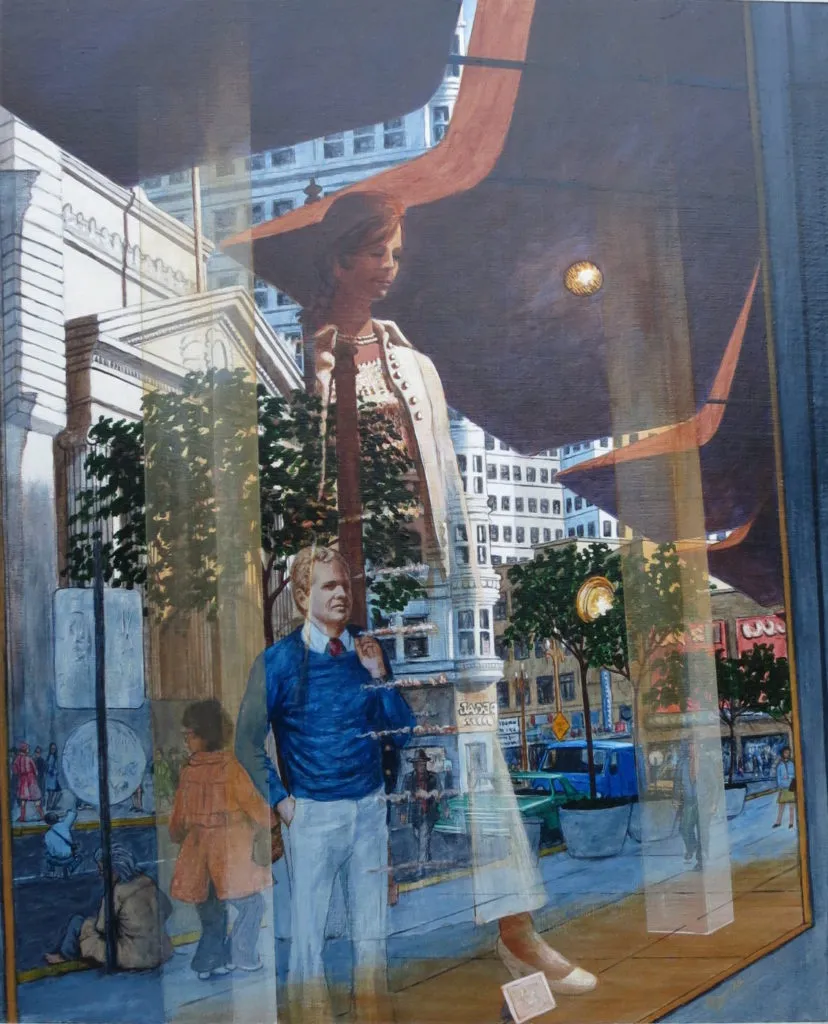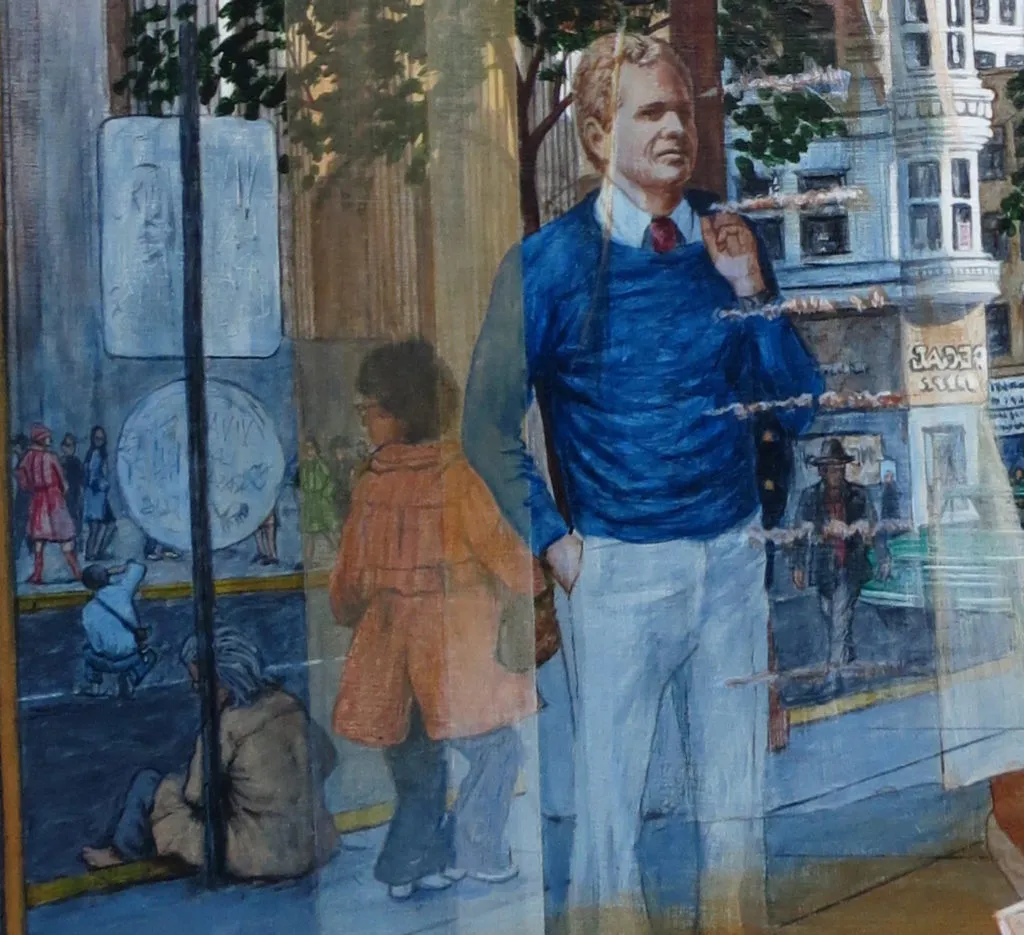
A male voice said he was calling from San Diego: " My name is Thomas Aguilar and I'm trying to find an artist named John Michael Keating. I am hoping you might be him."
"That is my name and I am a painter. Years ago I used to live in San Diego. Why are you trying to find this person?"
He explained that he was a volunteer worker in a thrift store and that he had discovered an unusual painting. "We get a lot of amateur stuff donated here, paintings of mountains and sunsets and paintings of dogs and cats, but never artwork of such high quality as this one. So I was curious. I found the name of the artist written on the back." Then he added, "the painting shows the reflection of a man in a blue sweater looking into a store window." Then I knew Mr. Aguilar had found the artist he was looking for.
Had this been a scene in a film or a novel, there would be a flashback at this point. I would have been whirled more than twenty years back into the past to recall many memories, all beautiful, of the portrait and of the man who had commissioned me to paint it. The truth, however, was not so simple: Yes, I remembered the portrait, but very little of the subject.

Mannequin - Acrylic/Masonite - 24 x 29 inches
In appearance he looked as you see him in the painting, tall, handsome, athletic. He was always well-dressed and unfailingly polite. As I remember, he worked in real estate and lived alone. Other than that, I knew little about him, but I always felt relaxed and comfortable in his presence and sensed that he had a gentle soul.
Neither of us was interested in doing a traditional portrait. I suggested an ambiguous image, a street scene with tension between daylight and artificial light, glass surfaces that were simultaneously transparent and reflective. And for good measure why not include cars, shoppers passing by, a shoeless, homeless man sitting on the curb and an artist and model in a fashion shoot on the other side of the street? He loved the idea, and was delighted with the final result.

Mannequin - Detail
I was satisfied with the finished painting as well-- as a painting-- but as a portrait there was something missing. His likeness was accurate, which pleased him, but to me he was like a stencil, a blank slate. I imagined that perhaps the street scene and his gaze at the mannequin would reveal something about his character, his inner life. Maybe it did, at least to someone who knew him. But I wondered if perhaps I had introduced all the other elements into the painting to obscure the fact that I knew so little about him.
Thomas Aguilar's voice brought me back to the present. "The reason I'm calling you, Mr. Keating, is to ask if you might like to get your painting back. I never met the man in your portrait, but I can't bear to see him here in this thrift store. It's sad to think that no one who comes into this place will ever buy the painting, and I would hate to have it end up in a landfill."
I gave him my address and my thanks, but there was still something I didn't understand. Did he know, I asked, why the painting had ended up in the thrift store in the first place? "Our store was created during the AIDS epidemic for the benefit of men who die from it. Very often many of the possessions of the victims are of no interest to their families. So it's a guess, but I suppose that's what happened in this man's case."
Two weeks later the painting arrived at my studio. It's here still. But I wish it were instead in the home of someone in the man's family or in the home of a friend who had known him and who had loved and cared for him while he was still alive.
Link: https://johnmichaelkeating.com/2019/02/05/phone-call-from-a-stranger/